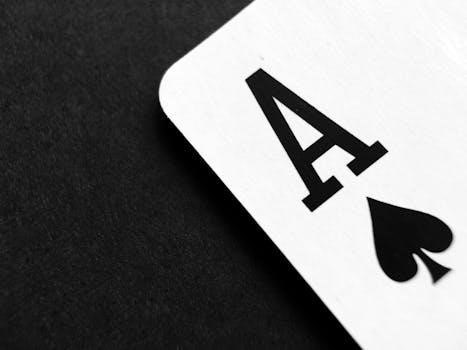Understanding the 4Cs of Diamonds
The 4Cs – Carat, Cut, Color, and Clarity – are the globally recognized standard for assessing diamond quality. These four characteristics determine a diamond’s overall value and beauty, guiding consumers in their purchase decisions. Each C plays a crucial role in the final appearance.
The 4Cs of diamonds—carat, cut, color, and clarity—are a universal method for evaluating a diamond’s quality. Established by the Gemological Institute of America (GIA), this system provides a common language for diamond grading, ensuring consumers know exactly what they are purchasing. Understanding these 4Cs is essential for anyone considering buying a diamond, as they directly impact its appearance and value. Carat refers to the diamond’s weight, with one carat equal to 100 points. Cut describes how well a diamond’s facets interact with light, affecting its brilliance, fire, and scintillation. Color grading ranges from D (colorless) to Z (light yellow or brown), with colorless diamonds being the most valuable. Clarity assesses the absence of inclusions and blemishes within the diamond. Each of these components contributes to the unique characteristics of a diamond, guiding both traders and consumers in assessing value and selecting the perfect stone based on personal preference and budget.
Carat Weight⁚ Size and Value
Carat weight refers to a diamond’s mass, with one carat equivalent to 200 milligrams, or 0.2 grams. It’s a crucial factor in determining a diamond’s value, as larger diamonds are rarer and, consequently, more expensive. The term “carat” derives from the carob seed, known for its consistent weight, which was historically used in measuring gemstones. While carat weight is often associated with size, it’s essential to remember that two diamonds of the same carat weight can have different physical dimensions due to variations in cut proportions. The price of a diamond increases exponentially with carat weight, meaning that a two-carat diamond will be worth considerably more than two one-carat diamonds of the same quality. However, carat weight should not be the sole determinant; the other 3Cs—cut, color, and clarity—also significantly affect a diamond’s overall value and appearance. Therefore, understanding carat weight is crucial, but it must be considered in conjunction with the other 4Cs.
Diamond Cut⁚ The Key to Sparkle
Diamond cut is often considered the most crucial of the 4Cs, as it directly impacts a diamond’s brilliance, fire, and scintillation—the sparkle that makes a diamond so captivating. It’s not about the diamond’s shape (round, pear, etc.), but rather the proportions, symmetry, and polish of its facets. A well-cut diamond will reflect light internally and return it through the top of the stone, creating maximum sparkle. Poorly cut diamonds, on the other hand, may lose light through the bottom or sides, appearing dull. Cut grades typically range from excellent to poor, reflecting how well the diamond interacts with light. The quality of the cut is determined by factors like the depth, table size, crown angle, and pavilion angle. Even if two diamonds have the same grade on the diamond cut chart, the cuts can vary significantly among diamonds. Therefore, understanding the nuances of diamond cut is paramount in selecting a diamond with optimal brilliance and beauty.
Color Grading⁚ From Colorless to Tinted
Diamond color grading assesses the degree to which a diamond is colorless. The GIA color scale ranges from D, which is completely colorless and the most valuable, to Z, which exhibits a light yellow or brown tint. Most gem-quality diamonds used in jewelry fall within the near-colorless range. While many think of diamonds as being colorless, truly colorless diamonds are very rare and command a premium. The color grade is determined by comparing a diamond to master stones under controlled lighting conditions. The subtle differences in color can impact a diamond’s overall appearance and value. Diamonds with less color are generally preferred, with the exception of fancy-colored diamonds which are graded differently. The less color present in a white diamond, the more light it can reflect, resulting in more brilliance. Understanding diamond color grading helps in making informed choices, aligning personal preferences with a desired budget.
Clarity Characteristics⁚ Flaws and Inclusions

Diamond clarity refers to the absence of inclusions and blemishes within a diamond. Inclusions are internal flaws, while blemishes are external imperfections. The GIA clarity scale ranges from Flawless (FL), meaning no inclusions or blemishes are visible under 10x magnification, to Included (I1, I2, and I3), which have noticeable inclusions that may affect brilliance. Diamonds are graded based on the size, number, position, nature, and color of clarity characteristics; Most diamonds have some level of inclusions, as a completely flawless diamond is exceptionally rare. The clarity grade significantly affects a diamond’s appearance and value. Higher clarity grades indicate a cleaner, more brilliant diamond. However, inclusions are often not visible to the naked eye. Understanding the clarity grades and considering your preferences is important in selecting a diamond that best suits your needs. While higher clarity means a more rare and expensive diamond, lower grades can be beautiful as well.

The 4Cs in Diamond Grading
The 4Cs form the basis of all diamond grading systems, ensuring consistent evaluation worldwide. These criteria are standardized by organizations like GIA, enabling transparency and trust. This approach helps establish a universal language for diamond quality assessment.
GIA International Diamond Grading System
The Gemological Institute of America (GIA) developed the International Diamond Grading System, a globally recognized standard for evaluating diamond quality. This system provides a consistent and unbiased method for assessing diamonds based on the 4Cs⁚ Carat weight, Cut, Color, and Clarity. The GIA’s system ensures that diamonds are graded according to a uniform scale, allowing for a clear understanding of a diamond’s attributes.
GIA’s grading reports are widely trusted in the diamond industry and are crucial for both buyers and sellers. The system’s detailed analysis of each C allows for a comprehensive evaluation of a diamond’s overall quality and value. The GIA has played a significant role in creating transparency and consistency in the diamond market, providing a valuable resource for consumers. Their grading system is considered the benchmark for diamond evaluation, influencing diamond pricing and trade worldwide. The GIA’s commitment to education and research further strengthens its position as a leading authority in gemology, making their system indispensable for anyone involved in the diamond industry. It promotes accurate representation of a diamond’s characteristics.
Diamond Grading Chart Overview
A diamond grading chart provides a visual representation of the standards used to assess a diamond’s quality based on the 4Cs. These charts typically outline the scales for each of the 4Cs, making it easier to understand how diamonds are categorized. For instance, color grading ranges from D (colorless) to Z (light yellow or brown), and clarity is assessed from Flawless to Included, with various grades in between. Cut is evaluated by factors like brilliance, fire, and scintillation, using terms like Excellent to Poor. Carat weight is straightforwardly measured, with one carat equal to 100 points.
These charts are crucial for understanding the relationship between each C and a diamond’s overall grade and value. They serve as a valuable reference tool for both professionals and consumers, enabling them to compare diamonds based on objective criteria. Diamond grading charts are often presented in a tabular format, allowing for easy comparison across different categories. These charts may also include diagrams to illustrate concepts like diamond cut proportions and common inclusion types. By using a diamond grading chart, one can easily understand how these characteristics impact the overall beauty and price of a diamond. It provides a standardized method of understanding.
How the 4Cs Determine Diamond Value

The 4Cs collectively determine a diamond’s value, with each characteristic contributing significantly to its price. Carat weight, for instance, directly impacts value, with larger diamonds being rarer and thus more expensive per carat. However, two diamonds of the same carat weight can have vastly different values based on their cut, color, and clarity grades. A diamond with a high cut grade will exhibit superior brilliance and sparkle, increasing its value. Colorless diamonds, graded D-F, are also considered more valuable than those with a noticeable tint. Similarly, diamonds with fewer inclusions, graded as Flawless or Internally Flawless, fetch a higher price due to their rarity.
The interaction between the 4Cs is vital; a diamond with a high color and clarity grade might be less valuable if its cut is poor. Therefore, it is crucial to consider all four aspects when assessing a diamond’s worth. The 4Cs system ensures transparency and consistency, allowing buyers to understand the factors contributing to a diamond’s price. Understanding the 4Cs allows consumers to make informed decisions and balance their preferences with their budget. This standard framework ensures fair pricing across the global diamond market. Ultimately, the interplay of these characteristics dictates how diamonds are valued by industry experts and consumers.

Practical Application
Understanding the 4Cs is crucial for making informed diamond purchases. This knowledge empowers buyers to choose a diamond that aligns with their preferences and budget. Practical tools like diamond size charts further aid the selection process.
Using the 4Cs to Choose a Diamond
When selecting a diamond, understanding the 4Cs—cut, color, clarity, and carat weight—is paramount. Prioritize the ‘C’ that matters most to you; for instance, if brilliance is key, focus on cut. A well-cut diamond maximizes light reflection, enhancing its sparkle. Color grading ranges from colorless (D) to tinted (Z), with colorless diamonds generally being more valued, except in the case of fancy colored diamonds. Clarity refers to the presence of inclusions or flaws; fewer inclusions mean higher clarity and value. Carat weight indicates the size; larger diamonds are rarer and therefore more expensive. Remember that a larger carat weight doesn’t necessarily mean a better-looking diamond, especially if cut, color, or clarity is compromised. Use the 4Cs as a guide, not an absolute rule, and balance your preferences with your budget to find the perfect diamond.
Diamond Size Charts and Carat Conversion
Diamond size charts provide a visual guide to understanding how carat weight translates into physical dimensions, typically measured in millimeters. It’s crucial to remember that carat refers to weight, not size, although there is a correlation. A 1-carat round diamond, for example, typically measures around 6.5mm in diameter. These charts help visualize how a diamond of a particular carat weight will appear on your finger. Carat conversion is straightforward⁚ one carat equals 100 points, so a 50-point diamond is 0.5 carats. Larger diamonds are rarer and more valuable per carat, so the price increases exponentially with size. These charts can be found online, often in PDF format, offered by reputable jewelers and gemological institutions. These tools will help you better understand how carat weight translates to size and will help you to plan your purchase.
Where to Find Reliable Diamond Information
Seeking trustworthy sources is paramount when researching diamonds. The Gemological Institute of America (GIA) is a leading authority, providing educational resources and diamond grading reports. Their website offers a wealth of information on the 4Cs and diamond certification. The International Gemological Institute (IGI) is another reputable source for grading and education, often providing downloadable diamond grading charts in PDF format. Reputable jewelers, like James Allen, also offer interactive diamond inspection tools and educational content. Look for organizations that adhere to strict grading standards and provide unbiased evaluations. Avoid websites that lack transparency or offer suspiciously low prices. Always cross-reference information from different sources to ensure accuracy. Be sure to seek out educational materials from recognized authorities in gemology to make informed decisions when purchasing diamonds. Also remember that reputable jewelers must provide you with the necessary information.
